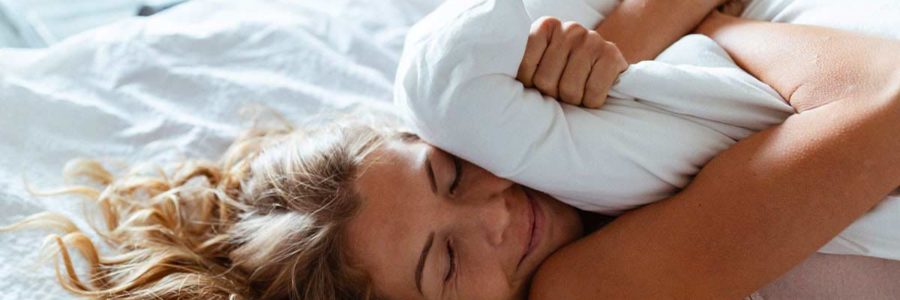How to Biohack Sleep: From night sweats and hot flashes to heart rate variability and hormone imbalances to couples who like to sleep at different temps, today we explore all things sleep. Why (deep) sleep is king, busting sleep myths, and giving you all the top tips to biohack your sleep and promote whole-body health.
![]()
This article has been medically reviewed by Dr. Charles Penick, MD![]()
(Deep) Sleep is King
There is no denying that sleep is king when it comes to health. The areas influenced by sleep quality range from cognitive and physical performance to the immune system, aging, stress tolerance, recovery, and even willpower!1
It can be helpful to see sleep as an amplifier. It will magnify the results of any goal you try to achieve, be it weight loss, muscle gain, mental health, longevity, or general well-being. If there is one area to focus on that will ripple into every other aspect of your life, look no further than sleep.
However, the key to mastering sleep goes far beyond just falling asleep. There is no doubt a problem if you’re unable to sleep, but you may still benefit from better sleep even if you don’t have insomnia.
Better sleep is all about quality, precisely the amount of deep and REM sleep you get.2 Sleep is divided into three general stages: light, REM, and deep sleep. The profoundly healing stages occur when the body slips into the deeper stages of sleep.3 Therefore falling asleep in itself. However, a necessary step of the process does not ensure your sleep will act as an amplifier to all the other benefits in your life.
Predominantly sleeping in light sleep has been associated with various ailments and is often considered one of the roots of disease in general. A single night’s inadequate sleep, for example, decreases insulin sensitivity.4 Consistently, decreases in insulin sensitivity lead to insulin resistance and promote a host of metabolic and stress-related diseases like diabetes, PCOS, and obesity.5-6
Busting Sleep Myths
1. If You Sleep 8 Hours, You Had a Good Nights Sleep
The 8 hours of sleep a night concept was only invented after factory workers petitioned for 8 hours of rest during the industrial revolution.7 Although it has a degree of validity from a circadian rhythm perspective, highlighting the benefits of sleeping while it’s dark, the time itself does not indicate a good night of sleep or healthy sleep patterns.
As we have touched on briefly earlier, not all sleep is created equal. The amount of time spent sleeping means very little compared to sleeping in the deeper stages of sleep.2
Unfortunately, knowing how long your light, REM, and deep sleep is impossible without a tracking tool. However, there are currently tracking watches or rings like the Oura Ring that help you identify how long you’re spending in a deeper sleep.
So what’s the sweet spot? An excellent target for nightly sleep is two hours of REM and two hours of deep sleep 8. After that, as much time as you can fit in resting, and anything over the combined four hours of deep and REM sleep can be considered icing on top.
2. Some People Are Just Bad Sleepers
There is no such thing as a physiologically bad sleeper.8 Sleep is a product of lifestyle and habit, and our bodies are highly adaptable and trainable to get better sleep. So no matter how bad you consider your sleep, it’s never too late to get your sleeping routine and quality back on track.
3. Your Body Gets Used to Getting Less Sleep
There is no way to train your body to operate optimally with less sleep. Studies highlight that a lack of sleep takes a toll both in the short- and long term. A single night of lousy sleep increases drowsiness and takes a toll hormonally. For example, a single night of poor sleep decreases insulin sensitivity.
Over the long run, chronic sleep deprivation interferes with cognitive health (including memory, focus, and creativity), metabolism, hormonal health, cardiovascular health, mental health, and immune health.9
4. Napping Makes Up for Lack of Sleep at Night
Although naps are not necessarily bad, they do not make up for a decent night of sleep. This is because the stages of sleep occur in cycles; a quick nap will not allow for the deeper regenerative and healing phases of REM and deep sleep.
Although they can be great for a quick energy boost or more rest while recovering from illness or injury, they are not an adequate substitute for a night of deep, long sleep. To optimize your nap, stick to about 30 minutes and get it in by the early afternoon. Napping too late in the day can interfere with your regular circadian rhythm and end up throwing off your sleep cycle.9
How to Promote a Deeper Sleep
A disclaimer to this section is that no two people are exactly alike. Although these general guidelines promote deeper sleep, not every point will apply to every person. For example, some people get away with caffeine before bed and can still clock quality hours of deep sleep. The key is self-awareness and,d ideally, tracking your sleep metrics to know what’s going on once you fall asleep.
Routine
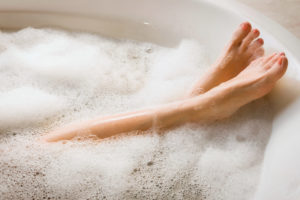
Routine is one crucial factor in sleep because much of sleep quality comes from cultivated habits, creating a hormonal response to promote sleep. All the later mentioned habits (like light exposure, eating and exercise timing, and body temperature) generate a good sleep routine. The key is consistency!
Other aspects that influence a good sleep routine are regular sleep and wake time.10 Ideally, you are going to bed at the same time, almost all the time. Having a chronic Monday to Friday bedtime, but it being many hours later on weekends (for example), may reduce your sleep quality.
Another thing that can help promote deep sleep is a bedtime ritual that prepares your body for rest. Slow-paced self-care habits like self-massage, a hot bath, or diffusing lavender essential oils can help trigger the body that it’s time to unwind and sleep.
Light Exposure
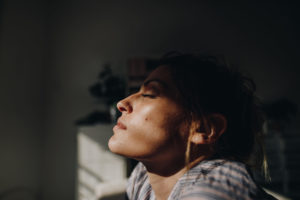
The primary thing to understand when it comes to sleep and light is that, ancestrally, we did not have artificial environments that provided blue light after sundown. The blue light from electronics (T.V.s, smartphones, tablets, and general indoor lighting) is the light that usually comes from the sky during the daytime. This blue spectrum light generates a hormonal response that promotes wakefulness as a cortisol release.11
When the blue light is no longer present, melatonin (the sleep hormone) is released and takes over, promoting sleep. When we continue exposing our bodies, especially our eyes, to blue light after sundown, this interferes with sleep quality at best and can even lead to insomnia.11
Conversely, it is also important to get exposed to daylight as soon as you wake up. Getting outside and exposing your body to sunlight starts this circadian clock.12 Exposure to daylight first thing will help promote a deeper sleep that night and encourage a healthier circadian rhythm.
Eating and Exercise Timing
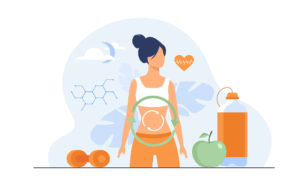
Avoiding vigorous exercise or big meals 3 hours before bed is ideal for optimizing sleep. Heavy meals or intense exercise are linked to lower-quality sleep. Movement causes an elevation of cortisol, the stress hormone that opposes the sleep hormone melatonin.13 When it comes to food, the body benefits from not digesting all night long for many reasons, including the elevated core temperature during digestion. Eating too close to bed will also prevent the healing processes of autophagy when the body is in a fasted sleep state.14
Ditch Alcohol
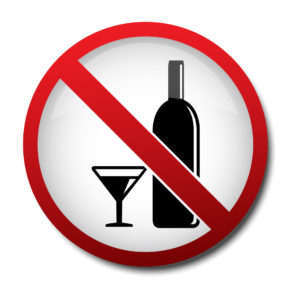
Although you may be familiar with alcohol’s ability to help individuals get to sleep (or pass out), it does not help with sleep quality at all. As a central nervous system depressant, alcohol will relax and promote sleepiness, but it is associated with a decreased time and quality of sleep, too.15 So, although people may fall asleep faster, the rest will remain mainly in the shallow layers of light sleep.
Lower Body Temperature
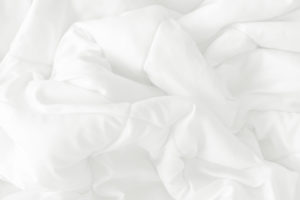
Deeper sleeping stages are accompanied by a cooling of the core and brain temperature.16 This is one reason many of the points above derail sleep: higher body temperate generally leads to a night of poor sleep.
The heat generated between you and your bed is a common problem when it comes to your core temperature cooling down. But, much like a car, passing by air is not enough to cool the engine, which is why we have radiators.
Cooling pads like the CHILI pad help drop the core body temperature enough to promote deep sleep. This cooling pad has water coils that run through it and can be modified to any temperature that suits your bio-individual sleeping needs.
Other pads like the OOLER offer a cooling and heating option that can oscillate depending on your preferences. Many people, especially women, prefer starting with more heat. With the OOLER you can increase the temperature to start, followed by cooling to promote deep sleep and then raising the heat again in the early morning to encourage the cortisol release that comes with alert wakefulness in the morning.
You can benefit from revelation health discounts on these cooling pads using revhealth25 for 25% off CHILI pad and revhealth15 for 15% off OOLER.
Summary
Sleep is one aspect of health that you can use to amplify your other life goals. It has such a far-reaching presence that if you had to focus on just one part of health, optimizing sleep would spill out and improve all other factors. Improving sleep quality is the key; it hinges on how much deep sleep you get. You can improve deep sleep by implementing a routine, getting the right light exposure at specific times, avoiding big meals or exercising 3 hours before bed, avoiding alcohol, and lowering core body temperature while you sleep.
Medical Disclaimer: This article is based on the opinions of The Cell Health team. The information on this website is not intended to replace a one-on-one relationship with a qualified healthcare professional and is not intended as medical advice. Instead, it is intended to share knowledge and information from the research and experience of the Cell Health team. This article has been medically reviewed by Dr. Charles Penick, MD, for the accuracy of the information provided. Still, we encourage you to make your own healthcare decisions based on research and in partnership with a qualified healthcare professional.
References:
- “The Benefits of Slumber.” National Institutes of Health, U.S. Department of Health and Human Services, 4 Apr. 2018, newsinhealth.nih.gov/2013/04/benefits-slumber.
- Walker, Matthew P. Why We Sleep: the New Science of Sleep and Dreams. Penguin Books, 2018.
- Tasali, Esra, et al. “Slow-wave sleep and the risk of type 2 diabetes in humans.” Proceedings of the National Academy of Sciences of the United States of America vol. 105,3 (2008): 1044-9. doi:10.1073/pnas.0706446105
- Knutson, Kristen L. “Impact of sleep and sleep loss on glucose homeostasis and appetite regulation.” Sleep medicine clinics vol. 2,2 (2007): 187-197. doi:10.1016/j.jsmc.2007.03.004
- Rains, Justin L, and Sushil K Jain. “Oxidative stress, insulin signaling, and diabetes.” Free radical biology & medicine vol. 50,5 (2011): 567-75. doi:10.1016/j.freeradbiomed.2010.12.006
- Spiegel, K et al. “Impact of sleep debt on metabolic and endocrine function.” Lancet (London, England) vol. 354,9188 (1999): 1435-9. doi:10.1016/S0140-6736(99)01376-8
- Cervera, César. “La Jornada De Ocho Horas: ¿Un Invento ‘Sindicalista’ Del Rey Felipe II?” Abc, ABC.es, 8 May 2019, www.abc.es/historia/abci-jornada-ocho-horas-invento-sindicalista-felipe-201905080106_noticia.html.
- institute of Medicine (U.S.) Committee on Sleep Medicine and Research; Colten HR, Altevogt BM, editors. Sleep Disorders and Sleep Deprivation: An Unmet Public Health Problem. Washington (D.C.): National Academies Press (U.S.); 2006. 2, Sleep Physiology. Available from: https://www.ncbi.nlm.nih.gov/books/NBK19956/
- “Brain Basics: Understanding Sleep.” National Institute of Neurological Disorders and Stroke, U.S. Department of Health and Human Services, www.ninds.nih.gov/Disorders/Patient-Caregiver-Education/Understanding-Sleep.
- “Healthy Sleep Habits.” Sleep Education, 2 Apr. 2021, sleepeducation.org/healthy-sleep/healthy-sleep-habits/.
- Janků, Karolina, et al. “Block the Light and Sleep Well: Evening Blue Light Filtration as a Part of Cognitive Behavioral Therapy for Insomnia.” Chronobiology International, vol. 37, no. 2, 2019, pp. 248–259., doi:10.1080/07420528.2019.1692859
- Figueiro, Mariana G., et al. “The Impact of Daytime Light Exposures on Sleep and Mood in Office Workers.” Sleep Health, vol. 3, no. 3, 2017, pp. 204–215., doi:10.1016/j.sleh.2017.03.005.
- Hirotsu, Camil, et al. “Interactions between sleep, stress, and metabolism: From physiological to pathological conditions.” Sleep Science (Sao Paulo, Brazil) vol. 8,3 (2015): 143-52. doi:10.1016/j.slsci.2015.09.002
- “Autophagy: Recycling Is Good for Your Body Too.” Cedars, www.cedars-sinai.org/blog/autophagy.html.
- Park, Soon-Yeob, et al. “The Effects of Alcohol on Quality of Sleep.” Korean journal of family medicine vol. 36,6 (2015): 294-9. doi:10.4082/kjfm.2015.36.6.294
- Harding, Edward C et al. “The Temperature Dependence of Sleep.” Frontiers in neuroscience vol. 13 336. 24 Apr. 2019, doi:10.3389/fnins.2019.00336


